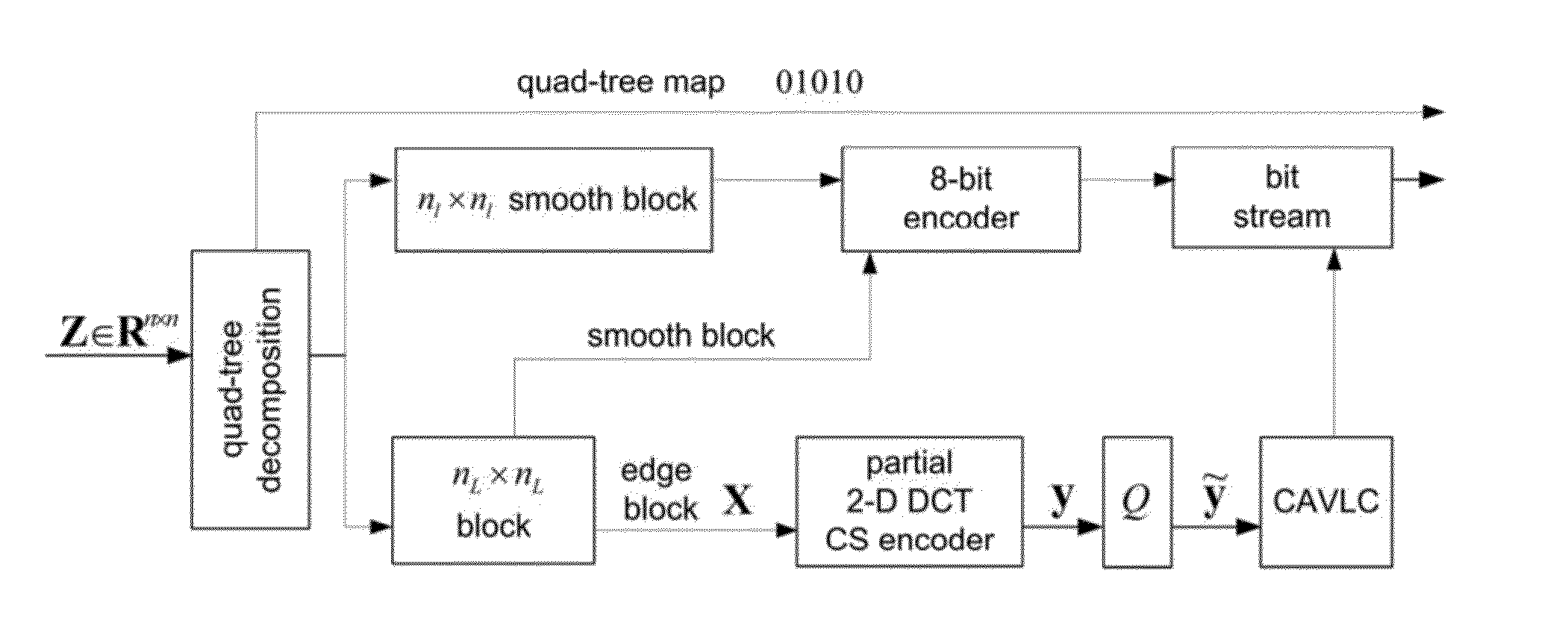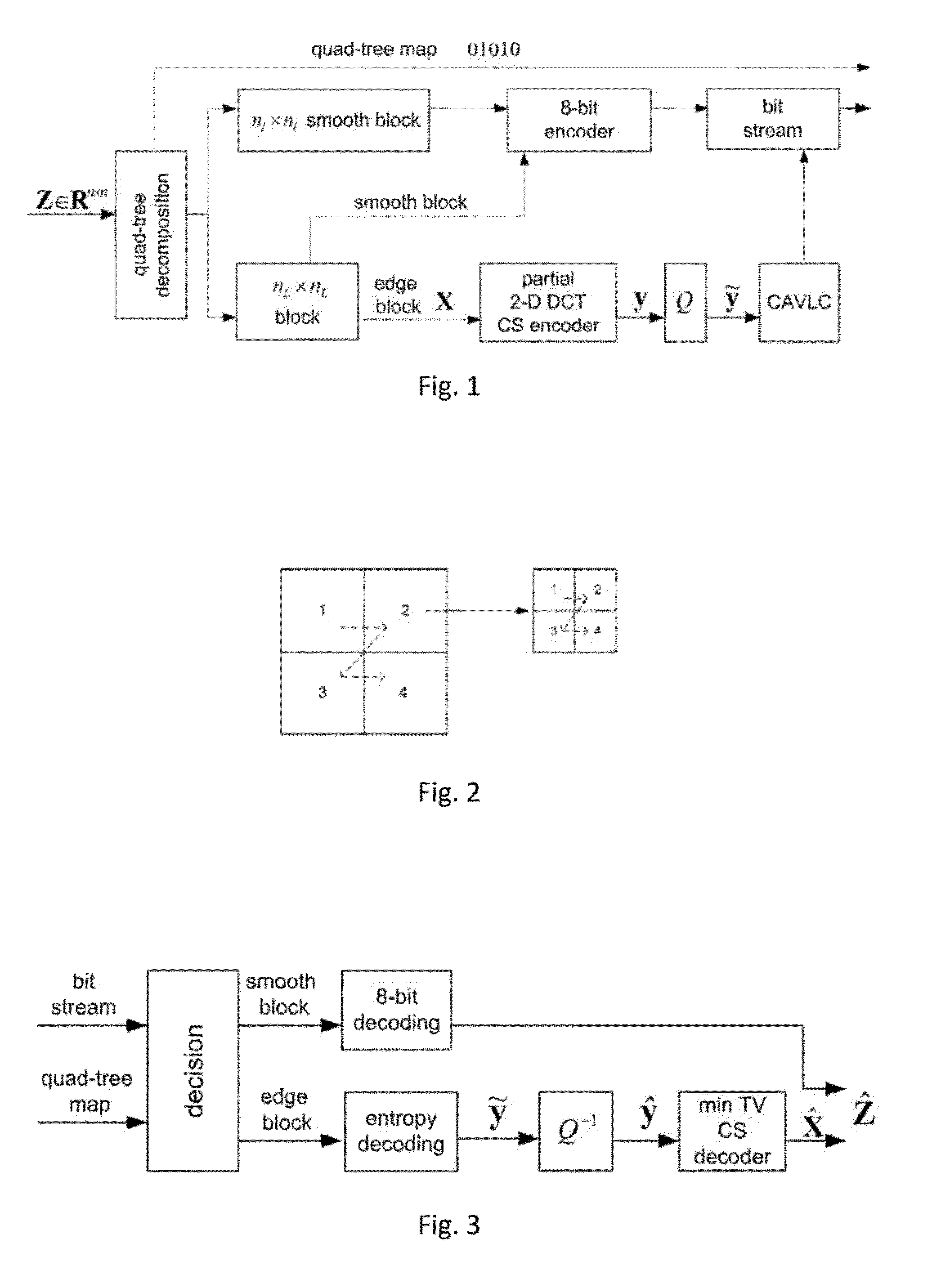Low-complexity depth map encoder with quad-tree partitioned compressed sensing
- Summary
- Abstract
- Description
- Claims
- Application Information
AI Technical Summary
Benefits of technology
Problems solved by technology
Method used
Image
Examples
examples
[0036]Experiments were conducted to study the performance of the proposed CS depth map coding system by evaluating the R-D performance of the synthesized view. Two test video sequences, Balloons and Kendo, with a resolution of 1024×768 pixels, were used. For both video sequences, 40 frames of the depth maps of view 1 and view 3 were compressed using the proposed quad-tree partitioned CS encoder, and the reconstructed depth maps at the decoder were used to synthesize the texture video sequence of view 2 with the View Synthesis Reference Software (VSRS) described in Tech. Rep. ISO / IEC JTC1 / SC29 / WG11, March 2010.
[0037]To evaluate the performance of the invented encoder, the perceptual quality of the decoded depth maps are shown in FIGS. 6 and 7, and the R-D performance of the synthesized views are shown in FIGS. 8 and 9. In addition, the encoder complexity was analyzed below. In these experiments, the inter-frame encoding structure was adopted for the invented quad-tree partitioned CS ...
PUM
 Login to View More
Login to View More Abstract
Description
Claims
Application Information
 Login to View More
Login to View More - R&D
- Intellectual Property
- Life Sciences
- Materials
- Tech Scout
- Unparalleled Data Quality
- Higher Quality Content
- 60% Fewer Hallucinations
Browse by: Latest US Patents, China's latest patents, Technical Efficacy Thesaurus, Application Domain, Technology Topic, Popular Technical Reports.
© 2025 PatSnap. All rights reserved.Legal|Privacy policy|Modern Slavery Act Transparency Statement|Sitemap|About US| Contact US: help@patsnap.com



